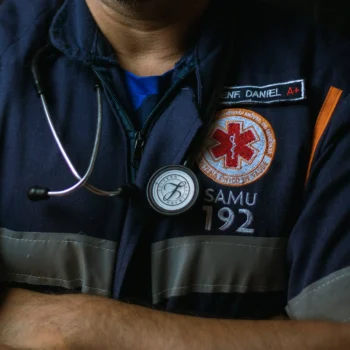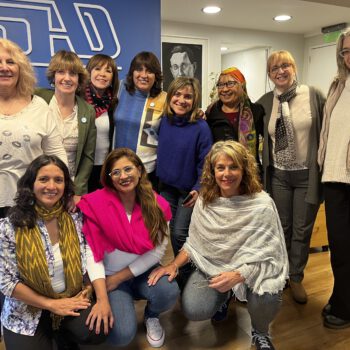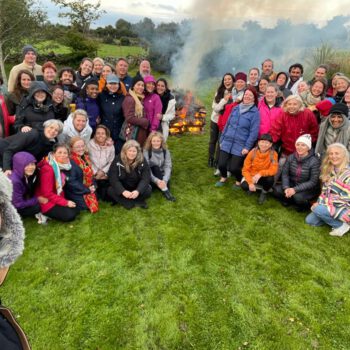By Kevin Young

As I considered writing this piece for general consumption, I felt my body contract. My stomach tightened, my chest and heart center closed in on themselves, and my mind, or at least the manifestation of fear in my body and mind, said ‘no.’
What Compassionate Inquiry has taught me is the capacity to recognise that. To recognise that something is happening for me right now and to offer myself the space, presence and acceptance to lean into it. When I do that, what I sometimes see, hear and feel is that there is a great fear of rejection present for me — ‘What if this isn’t ‘good enough’?’, ‘What if I don’t ‘do it right’?’, ‘What if they reject me?’
Let me give you a little background. I was the second of three children born before my mother was twenty years old. We lived in a very poor part of Belfast — a city that was engulfed by sectarian war, political mayhem, poverty and hardship. These were difficult times, and my father was a young twenty-year-old man with an already established alcohol dependence. Both my parents, due to the circumstances afforded them, were physically and emotionally unavailable.
By all accounts, my elder sister was ‘a lively one’ — today she is currently inquiring into her own ADHD. My younger sister was ‘a clingy one’ — she was on my mothers hip for the first ten or twelve years of her life, and then there was me. I was the ‘good child’. I never asked for anything, I never needed anything, I never bothered anyone — didn’t cry, didn’t expect, and learned, very early in life, to take care of myself.
I adapted to survive in my environment. My organism was so clever, so advanced that even at one or two years of age it had adapted; there was no point in asking for, wanting, needing or expecting love and emotional attunement, so I didn’t. I shut all those human needs down because it was the only thing I could do. It was the best thing I could do. Maybe you’ve done something similar?
What does a child start to believe about themselves in an environment that isn’t receptive to its needs, wants, desires and presence? It believes that its needs are not important, that it doesn’t matter, that the world doesn’t care. It believes that the best way to get on in the world is to not have needs.
Having studied, and been present to the experience of CI through interactions with colleagues, I have been able to track this adaptation right through my whole life. I really was a perfect child — everyone else’s mother loved to see me at their house— I could hide myself so well that I was a delight to look after. I have been really good at hiding my needs, struggles, desires and wants from most people in my life. I have been ashamed to have any of those things. ‘I’m not allowed to have needs,’ (I thought), and I felt a lot of shame that I did.
Addiction
At the age of about thirteen or fourteen I stumbled upon a great solution to shame: addiction. For the next seventeen years of my life I was a (mostly) high-functioning addict. Recreational drugs predominantly. It just got to the point that most days were good days for recreation.
Of course, because I was able to buy expensive alcohol and drugs and create a good standard of living for myself, I was able to convince myself that this wasn’t addiction — this was relaxation, this was socializing, this was connection, celebration, this was joyous, this was culture and expression. This was fast, exciting and loud living. Until it wasn’t. Gabor quotes Eckhart Tolle often, who says “Addiction starts in pain and ends in pain.”
Oh, and my adaptive ability to be extremely nice, charming, helpful and supportive of others’ needs was still in full flow. It still, to this day, requires me to keep my awareness and compassion on it so that it doesn’t drive my own needs deep into my body.
I’m curious how these words have resonated with you so far? Do you recognise any of my experience in your own story? If so, then CI can help us.
For me, one of the greatest tools that CI has given me is the ability to be present to myself, present to my own bodily experience, present to how shame and fear show up for me. CI has shown me that I can stay conscious with these sensations, in the present moment, without the need to ‘comfort’ myself with a substance or behavior. This isn’t always easy, but that’s okay. I am allowed to feel, to need. I am allowed to be seen, heard and experienced.
CI has shown me that when I can step back and see my whole experience —my mind, my body, my behavior and the environment I grew up in— there is not really much chance that it could have been any different, and this invites compassion. Ah ‘compassion,’ I can feel my body relax as I type that.
CI has shown me that when I bring forward all five levels of compassion, healing is possible, and not just possible, it’s my right. It’s yours too.
These are the 5 levels of compassion
- Ordinary compassion – when someone suffers, we feel for them
- Compassion of Understanding – be curious to understand what pain or what stories have created or are perpetuating the suffering of another
- Compassion of Recognition – there is nothing about the client that isn’t also true about us
- Compassion of Truth – suffering is caused by the false beliefs we internalized as children. Once the truth exposes this, the person can let go of the lies and delusion that govern their behaviour.
- Compassion of Possibility – we see in the other both the false mask, and who they truly are. There is strength, truth, courage, love and empathy in everyone, and it is possible to connect with these qualities. There is a healing process inside each of us, and an individual life has both meaning and direction.



